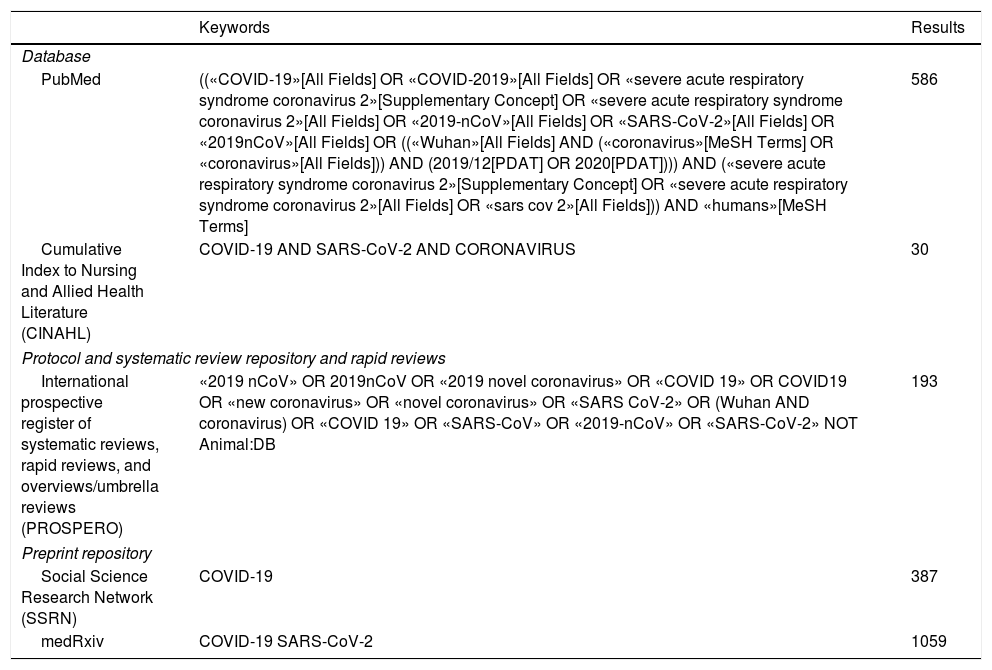The current health crisis due to the SARS-CoV-2 pandemic has triggered a need for answers that exceeds the actual capacity of producing scientific knowledge. Very few landmark studies on COVID-19 have been completed to this date, and those with preliminary results published provide very low levels of evidence. Under the current situation of uncertainty, the wise thing to do is to be cautious when it comes to interpreting the evidence available and avoid making rush decisions that may be more detrimental than beneficial.1 But, do we have such evidence available for an adequate management of COVID-19? The Chinese experience can help us solve the problems we have been having to deal with at the ICU setting in record time and with serious limitations in the human resources and equipment available.2 Consensus documents are also very important since they provide an agile and effective support to all the healthcare professionals while admitting that reviews and updates may be necessary based on the epidemiological situation of the pandemic, and changes necessary in the therapeutic alternatives used.3
On the other hand, different research working groups have been publishing protocols, and preprints that adds to the amount of currently available reports in the repositories (SSRN and medRxiv) that have not been approved during the review process. What this tells us is that we should be very cautious about this information. Table 1 shows the different sources of scientific information and the number of entries found with search terms relative to COVID-19/SARS-CoV-2 as of April 10, 2020. Results are significantly larger in unarbitrated references.
Results on article searches on COVID-19/SARS-CoV-2 from different sources.
| Keywords | Results | |
|---|---|---|
| Database | ||
| PubMed | ((«COVID-19»[All Fields] OR «COVID-2019»[All Fields] OR «severe acute respiratory syndrome coronavirus 2»[Supplementary Concept] OR «severe acute respiratory syndrome coronavirus 2»[All Fields] OR «2019-nCoV»[All Fields] OR «SARS-CoV-2»[All Fields] OR «2019nCoV»[All Fields] OR ((«Wuhan»[All Fields] AND («coronavirus»[MeSH Terms] OR «coronavirus»[All Fields])) AND (2019/12[PDAT] OR 2020[PDAT]))) AND («severe acute respiratory syndrome coronavirus 2»[Supplementary Concept] OR «severe acute respiratory syndrome coronavirus 2»[All Fields] OR «sars cov 2»[All Fields])) AND «humans»[MeSH Terms] | 586 |
| Cumulative Index to Nursing and Allied Health Literature (CINAHL) | COVID-19 AND SARS-CoV-2 AND CORONAVIRUS | 30 |
| Protocol and systematic review repository and rapid reviews | ||
| International prospective register of systematic reviews, rapid reviews, and overviews/umbrella reviews (PROSPERO) | «2019 nCoV» OR 2019nCoV OR «2019 novel coronavirus» OR «COVID 19» OR COVID19 OR «new coronavirus» OR «novel coronavirus» OR «SARS CoV-2» OR (Wuhan AND coronavirus) OR «COVID 19» OR «SARS-CoV» OR «2019-nCoV» OR «SARS-CoV-2» NOT Animal:DB | 193 |
| Preprint repository | ||
| Social Science Research Network (SSRN) | COVID-19 | 387 |
| medRxiv | COVID-19 SARS-CoV-2 | 1059 |
Also, to this point, the scientific evidence available on this topic is still associated with low levels of evidence. Most of the 586 findings obtained through Pubmed are comments, letters to the editor, and editorials. No meta-analyses, clinical trials or observational studies have been found (Fig. 1).
The so-called «living systematic review» is a tool that helps in the decision-making process in the daily routine clinical practice with the highest level of evidence and the capacity to solve the problem of the ongoing publication of new data. It is based on a systematic review of the scientific literature available while leaving the review window open to add new evidence as it becomes available. Also, this can lead to changes in the recommendations made based on new data that may have appeared.4 Several international groups are working on this type of living evidence that may provide an easy and updated answer to the problems found in the management of COVID-19 by combining methodological rigor and new technologies.5
This pandemic has taught us quite a few lessons. One of them is that scientific knowledge needs to be spread fast and on an ongoing basis to provide timely answers to the doubts and questions physicians may have during their routine clinical practice. In a changing and specific environment like the ICU setting, this premise may be considered an interesting strategy to be developed through the so-called «living systematic review».
Please cite this article as: Santillan-Garcia A. Evidencia viva frente al SARS-CoV-2. Med Intensiva. 2021;45:321–322.







